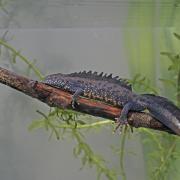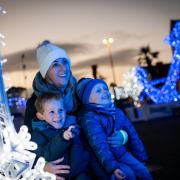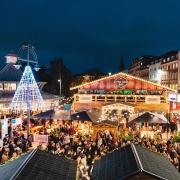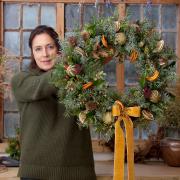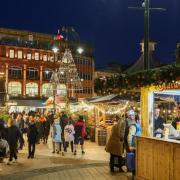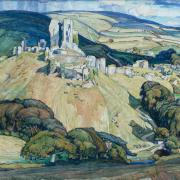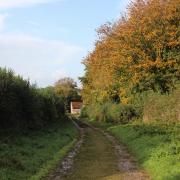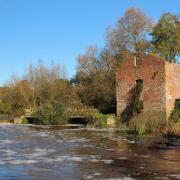On a crisp winter’s morning, long shadows spread like fingers across a veil of sparkling frost covering the ancient grassland at Fontmell Down.
This icy dusting extends to hedgerows around this Dorset Wildlife Trust nature reserve which offers panoramic views over the Blackmore Vale. This chalk downland site, on the way to Shaftesbury, is an internationally important habitat filled with wildflowers and butterflies, some very rare, during the summer.
Despite the chill in the air, there is still plenty of wildlife to see in winter, though some are slumbering. Resident dormice are hibernating, curled up tightly underneath logs or leaves, at the base of a tree, or slightly under the ground where the temperature is more constant.
Overwintering woodcocks (pictured above) hide in the wooded areas, superbly camouflaged by their brown mottled plumage. Some woodcocks live in Britain all year round, while others migrate here from Europe and Russia for winter, seeking out damp woodlands and heathlands where they can feast on earthworms and beetles. If disturbed, these birds fly off in a zig-zag pattern, between the trees, before dropping back into the dense undergrowth.
Ravens are a common sight at Fontmell Down, easily identified by their long diamond-shaped tails. They are the largest member of the crow family, Corvidae, and they are a striking sight, soaring above the valley looking for their next meal which could be mammals, carrion, insects or birds. A circular marked trail (3km) starts from the car park at Spread Eagle Hill.
dorsetwildlifetrust.org.uk/nature-reserves/fontmell-down

When the red, red robin...
The enduring image of this red-breasted bird hopping around a snowy garden is one most of us will have seen. Robins sing to mark out their territory, from prominent perches throughout winter and will see off any intruders to the point of fighting. During the breeding season, their nests can crop up in odd places, such as plant pots, old wellies and shelves in sheds, though a nest built into ivy and other shrubs are their natural choice.

Snowdrops
Snowdrops are early harbingers of spring. From January to March, you will see drifts of snowdrops on roadside verges, woodland floors and in churchyards and gardens. It’s an easy flower to identify with its single stem supporting a delicate white flower, hanging down like a bell, and long narrow green-grey leaves. Snowdrops are one of the first flowers to bloom, so they are an important source of nectar and pollen for any insects awoken by unseasonably warm weather.

By-the-wind-sailor
This strange and beautiful species is known as a colonial hydroid. Much like the Portuguese Man O'War, they are made up of a colony of tiny individual animals. Its characteristic sail gives the animal its name, 'by-the-wind-sailor'. They are at the mercy of the wind and so are usually found washed up on the beach in their hundreds, or sometimes even thousands, after stormy winter weather. As they float along, their stinging tentacles prey on young fish and other small animals.






